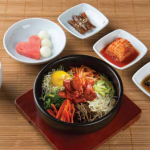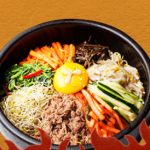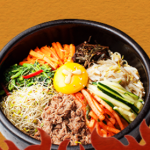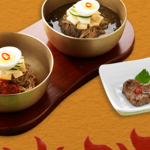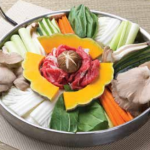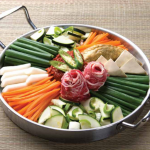Are you ready to embark on a fiery culinary adventure? Look no further than the vibrant and tantalizing world of Korean cuisine. The flavors found in Korean dishes have traveled far and wide, gathering acclaim from food enthusiasts around the globe. One prominent characteristic that sets Korean cuisine apart from others is its fearless use of spicy ingredients. In this article, we will explore how the spiciness level in Korean dishes compares to other international cuisines. Ready your taste buds for an exhilarating exploration!
Spiciness: A Global Pursuit
Spices have always played a crucial role in the culinary world, dating back centuries. From chili peppers in Mexico to pungent curry blends in India, different cultures have embraced spiciness in unique ways. Each cuisine boasts its own distinctive heat profile, but what makes Korean spiciness stand out?
Enter the Korean Spice Spectrum
Korean cuisine embraces spiciness with unmatched passion. The delicately balanced flavors of Korean dishes are often accompanied by a healthy dose of heat. Peppered with gochugaru (Korean chili flakes), gochujang (fermented chili paste), and spicy condiments like kimchi, Korean cuisine offers an explosion of flavors that keep you coming back for more.
존맛탱 (Jotmat-taeng): The Pleasure-Pain Paradox
Korean dishes are known for their ability to evoke the pleasure-pain paradox. As soon as you take your first bite, a whirlwind of sensations dances on your palate. The spice gradually intensifies, creating a symphony of flavors that stimulates every taste bud. While the initial bite may seem milder, Korean spiciness has a sneaky, cumulative effect. It builds up, leaving your mouth engulfed in a delightful heat that keeps you craving more.
The Scoville Scale: A Peek into Spiciness
To objectively measure spiciness, the Scoville scale comes to the rescue. Developed by pharmacist Wilbur Scoville, this scale ranks the heat-producing capabilities of different chili peppers. According to the scale, jalapeños typically range between 2,500 to 8,000 Scoville Heat Units (SHU). Comparatively, the famous gochugaru registers at around 4,000 SHU, while the fiery habanero hits 350,000 SHU. This stark difference illustrates how Korean spiciness ventures into bolder territories.
🔥 Frequently Asked Questions 🔥
1. Are all Korean dishes incredibly spicy?
While Korean cuisine has a reputation for spiciness, not all Korean dishes will set your mouth on fire. Many dishes offer mild or moderate levels of heat, allowing flavors to shine without overwhelming your taste buds. Banchan (assorted side dishes), soups, and stews often feature milder forms of spiciness.
2. How can I handle the spiciness in Korean dishes?
If you’re new to spicy foods, fret not! Korean cuisine strives to accommodate all taste preferences. Start with milder dishes and gradually work your way up to spicier options. Milk, yogurt, or a side of rice can offer relief if the heat becomes overwhelming. Embrace the adventure and challenge your taste buds to adapt and enjoy the heat!
3. Is Korean spiciness comparable to other Southeast Asian cuisines?
While both Korean and Southeast Asian cuisines display a love for spices, the spiciness levels may differ. Korean spiciness often leans towards medium to high heat, while Southeast Asian cuisines like Thai and Malaysian can reach fiery heights. Each cuisine has its own distinctive spice blend and heat tolerance, making them unique and exciting in their own right.
4. Can I adjust the spiciness level in Korean dishes?
Absolutely! Korean cuisine is flexible, allowing you to adjust the spiciness to suit your preferences. You can add or reduce spice by adjusting the amount of gochugaru, gochujang, or other spicy elements in the recipe. Don’t hesitate to make it your own and tailor the dish to your desired level of heat.
5. Are there any non-spicy Korean dishes?
Certainly! While many Korean dishes offer a spicy kick, there are numerous non-spicy options available. Mandu (dumplings), samgyeopsal (grilled pork belly), and japchae (stir-fried noodles) are just a few examples of popular non-spicy Korean dishes. Korean cuisine caters to a variety of preferences, ensuring there’s something delicious for everyone.
Spice Up Your Culinary Adventure
As you delve into the realm of Korean cuisine, prepare to be captivated by the scintillating heat that sets it apart. The spiciness in Korean dishes embraces a symphony of flavors, enticing and challenging your taste buds simultaneously. From comfort foods like bibimbap to the iconic kimchi, each dish contributes to the legacy of Korean spiciness. Embrace the spice, embark on a culinary adventure, and savor the unforgettable flavors that await you.
Remember, don’t hesitate to ask your questions in the comments section below! We’re here to help you embark on your spicy journey! 🌶️


